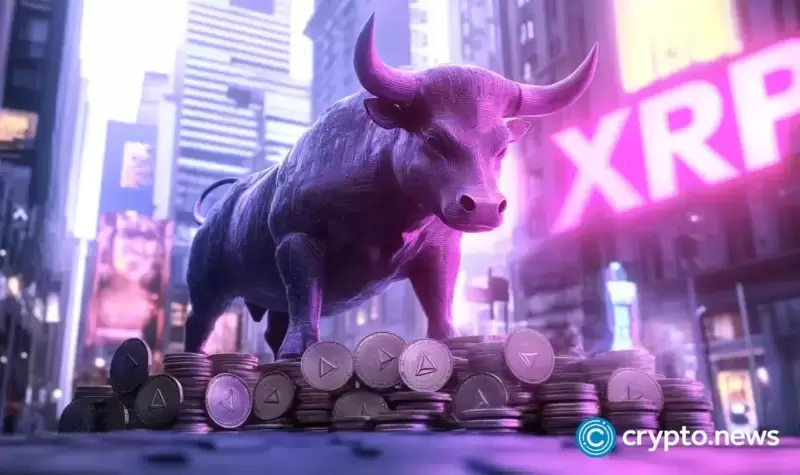 |
|
 |
|
 |
|
 |
|
 |
|
 |
|
 |
|
 |
|
 |
|
 |
|
 |
|
 |
|
 |
|
 |
|
 |
|
Cryptocurrency News Articles
Bitcoin Halving: Unraveling Impact on Price, Supply, and Market Dynamics
Apr 04, 2024 at 07:46 pm
Bitcoin halving, a significant event that reduces the mining reward and limits new Bitcoin creation, has historically boosted its price and market cap. Despite diminishing returns from each halving, Bitcoin's growing maturity may offset this trend. Future halving events will navigate the delicate balance between reduced supply and market pressures, while external factors such as monetary policy and Bitcoin's market cap remain influential.

Bitcoin's Halving Cycle: Deciphering the Impact on Price, Supply, and Market Dynamics
The Bitcoin halving event, occurring approximately every four years, has garnered significant attention due to its potential implications for Bitcoin's price and market dynamics. During a halving, the reward that miners receive for adding new blocks to the blockchain is halved, effectively reducing the rate at which new bitcoins enter the market. This reduction in supply has historically been associated with notable returns for Bitcoin holders.
Historical Impact: Price Surges and Diminishing Returns
Empirical evidence suggests that Bitcoin's price has historically exhibited significant gains following each halving event. According to research conducted by CoinGecko, the average price increase in the year following each halving has been an impressive 3,230%. However, this trend has shown signs of diminishing returns, indicating that future predictions based solely on the halving event may be more nuanced.
The initial halvings witnessed substantial price increases within a year post-event, with an 8,858% surge following the first halving and a 540% increase after the third. While the percentage gains have decreased with each subsequent halving, these events underscore Bitcoin's growing market presence and the significant anticipation surrounding each halving.
External Factors and Market Dynamics
Attributing price movements solely to the halving event overlooks other critical market dynamics that can influence Bitcoin's valuation. The Federal Reserve's monetary policy, for instance, has been observed to exert a direct impact on Bitcoin's price. CoinGecko's analysis indicates that the Fed's actions, particularly the expansion of the M2 money supply, have historically correlated with price movements in Bitcoin, highlighting the influence of external financial policies on asset repricing.
Furthermore, Bitcoin's market cap serves as an indicator of its maturity and market sentiment. Pre and post-halving market caps provide insights into investor expectations and the broader economic environment affecting Bitcoin. Notably, despite the halving's diminishing returns in terms of percentage gains, the overall growth in Bitcoin's market cap reflects its increasing legitimacy and integration into the mainstream financial landscape.
Anticipating the Fourth Halving: Complexity and Considerations
The anticipation of the fourth Bitcoin halving in April 2024 brings with it a variety of considerations, ranging from regulatory changes and macroeconomic factors to the advent of Bitcoin ETFs and their potential impact on market liquidity and investor behavior. While past halvings have been critical for Bitcoin's valuation, CoinGecko's research suggests that the complex interplay of market forces, including external economic conditions and regulatory developments, will continue to shape its future trajectory.
Inflation Hedge and Finite Supply: Bitcoin's Fundamental Value Proposition
The halving cycle underscores the immutable nature of Bitcoin's inflation rate and its appeal as a hedge against the unpredictable inflation of fiat currencies. As the supply of new bitcoins continues to decrease with each halving, the event's significance extends beyond short-term price fluctuations to the fundamental value proposition of Bitcoin as a finite and predictable asset, offering potential protection against the vagaries of traditional financial systems.
Disclaimer:info@kdj.com
The information provided is not trading advice. kdj.com does not assume any responsibility for any investments made based on the information provided in this article. Cryptocurrencies are highly volatile and it is highly recommended that you invest with caution after thorough research!
If you believe that the content used on this website infringes your copyright, please contact us immediately (info@kdj.com) and we will delete it promptly.
-

- Two Major Developments in Blockchain Technology Have Highlighted the Evolving Commitment of Key Players to Both Scalability and Futureproofing
- Apr 12, 2025 at 01:50 pm
- Two major developments in blockchain technology have highlighted the evolving commitment of key players to both scalability and futureproofing, with Exaion enhancing the Tezos ecosystem and Sui preparing for quantum computing threats. These moves underscore a broader industry trend of reinforcing infrastructure and security to meet emerging digital demands. By CoinDesk.
-

- Bitunix Expands Its Proof of Reserves Assets from $80 Million to Over $130 Million Marking a 60% Increase
- Apr 12, 2025 at 01:50 pm
- According to the recent update on April 1st 2025, in recent months, Bitunix's Proof of Reserves assets have grown significantly from $80 million to over $130 million marking a 60% increase.
-

- Best Bitcoin (BTC) Options Trading Platforms in 2025
- Apr 12, 2025 at 01:45 pm
- Growing popularity and attractive returns have given a boost to Bitcoin options trading in recent years. Investors who want high returns with relatively small capital are using crypto options trading to achieve their investment goals.
-

-

-

-

-

- 5x Rally in Sight for Ethereum (ETH) as Supply on Exchanges Hits a Decade Low, But This Crypto Could Bring a 10x Bigger ROI
- Apr 12, 2025 at 01:35 pm
- Ethereum's exchange reserves have plummeted to 8.97 million ETH, marking the lowest level since November 2015. This 16.4% drop since January signals a potential supply squeeze
-




















![Crypto Otaku - CRYPTO CHAOS! 83K BITCOIN! CRYPTO RALLY!! XCN , JASMY , SWFTC LEAD!!! [Episode 228] Crypto Otaku - CRYPTO CHAOS! 83K BITCOIN! CRYPTO RALLY!! XCN , JASMY , SWFTC LEAD!!! [Episode 228]](/uploads/2025/04/12/cryptocurrencies-news/videos/crypto-otaku-crypto-chaos-k-bitcoin-crypto-rally-xcn-jasmy-swftc-lead-episode/image-1.webp)









































